Papers by Christian Blaise
Environmental Toxicology and Chemistry, 1995
A novel phytotoxicity test is described herein that employs a microplate equipped with membrane-b... more A novel phytotoxicity test is described herein that employs a microplate equipped with membrane-bottomed wells. This MultiScreen[trademark] (Millipore Corp., Bedford, MA) microplate allows performance of a semistatic algal test, in which test medium is renewed periodically. With such a design, the algal test becomes comparable to other short-term tests used to evaluate chronic toxicity of chemicals and effluents. The EC50s
Environmental Toxicology & Water Quality, 1993
... How can/should we account for an effluent whose toxicity is persistent? Should genotoxiceffec... more ... How can/should we account for an effluent whose toxicity is persistent? Should genotoxiceffects be given the same weight as those affecting survival and reproduction? ... Each daily sample therefore constituted a 24 h composite in a 40-L glass container. ...
Environmental Toxicology & Water Quality, 1994
... eInsufficient data available to confirm a definite negative. 'Conflicting data: reported... more ... eInsufficient data available to confirm a definite negative. 'Conflicting data: reported negative by Soderman (1987) and positive by Spivey (1988). BWeakly positive: only one concentration indicating significant genotoxicity in repeated experi-...
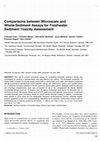
Environmental Toxicology and Water Quality, 1998
The use of several microscale assays for evaluating freshwater sediment toxicity was ( investigat... more The use of several microscale assays for evaluating freshwater sediment toxicity was ( investigated to develop a representative and cost-effective test battery. The bioassays evaluated 18 ) assays total included microscale assays performed on solid-phase, pore water, and organic extracts as well as conventional standardized whole-sediment assays with Chironomus riparius and Hyalella azteca on 10 sediment samples collected in the St. Lawrence/ Great Lakes system. Selected sediment physical and chemical characteristics were also conducted to aid in the interpretation of results. Benthic invertebrate assays such as C. riparius and H. azteca endpoints were found to correlate well to ( ) contaminant levels. Microscale assays such as ATP adenosine triphosphate measurement of sediment microbial biomass gave promising results to predict whole-sediment toxicity to benthic invertebrates. Most assays on pore water did not adequately represent whole-sediment toxicity, whereas organic extracts appeared to be more representative, alleviating some potential confounding factors such as interference due to toxicity caused by ammonia.
Aquatic Toxicology, 2008
The purpose of this study was to examine the toxic effects of cadmium–telluride (CdTe) quantum do... more The purpose of this study was to examine the toxic effects of cadmium–telluride (CdTe) quantum dots on freshwater mussels. Elliption complanata mussels were exposed to increasing concentrations of CdTe (0, 1.6, 4 and 8mg/L) and cadmium sulfate (CdSO4, 0.5mg/L) for 24h at 15°C. After the exposure period, they were removed for assessments of immunocompetence, oxidative stress (lipid peroxidation) and genotoxicity
Bulletin of Environmental Contamination and Toxicology, 1999

Environmental Toxicology and Water Quality, 1992
ABSTRACT Investigations were conducted to compare the efficiency of adenosine triphosphate (ATP) ... more ABSTRACT Investigations were conducted to compare the efficiency of adenosine triphosphate (ATP) extraction from freshwater zooplankton species (Skistodiaptomus oregonensis, Tropocyclops prasinus mexicanus, Daphnia magna, and Bosmina longirostris) using DMSO and cold H2SO4 extraction procedures. DMSO was found to extract more ATP (particularly in copepod species) while cold H2SO4 provided more consistent results. Homogenization by grinding samples during extraction was shown to be a very important step. Juvenile and adult specimens of D. magna were extracted. Adults gave higher ATP values. The necessity for a 24-h acclimation period was tested. Although acclimation appeared to provide more consistent results, no marked lowering of ATP level in organisms was registered without acclimation. No unique method was found to be optimal for all studied species. © 1992 John Wiley & sons, Inc.
Small-scale Freshwater Toxicity Investigations, 2005
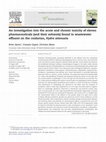
Science of The Total Environment, 2008
Pharmaceuticals previously identified in the effluent from the wastewater treatment plant (WWTP) ... more Pharmaceuticals previously identified in the effluent from the wastewater treatment plant (WWTP) in Montreal discharging into the St. Lawrence river, were tested for acute and chronic toxicity using the cnidarian Hydra attenuata. Acute toxicity was based on the established technique looking at morphological changes in the Hydra, while recently developed endpoints of feeding behaviour, attachment and growth (hydranth number) were used to measure chronic effects. The compounds under investigation (ibuprofen, naproxen, gemfibrozil, bezafibrate, carbamazepine, sulfamethoxazole, sulfapyridine, oxytetracycline, novobiocin, trimethoprim and caffeine) were tested individually in controlled laboratory exposures with LC 50 and EC 50 results calculated. All compounds tested had relatively high LC 50 values with gemfibrozil, ibuprofen and naproxen having the lowest at 22.36 mg/L and EC 50 values based on morphology of 1.18 to 2.62 mg/L (all concentrations are nominal). The EC 50 values based on feeding were similar to those based on morphology but with increased sensitivity for carbamazepine, bezafibrate and novobiocin. A trend of a reduction in feeding with deterioration in morphology was observed in the Hydra, with the exception of novobiocin, where a lower than expected EC 50 of 13.53 mg/L was found with no negative effect on morphology. Significant reductions in attachment and hydranth number were seen at concentrations of 1 and 5 mg/L for gemfibrozil and ibuprofen respectively. A toxicity threshold (TT) of 320 μg/L was calculated for ibuprofen, only a factor of 10 2 or 10 higher than the concentration found in the effluent in the present study (1.19 μg/L) and in other Canadian effluents studied (22 μg/L [Brun GL, Bernier M, Losier R, Doe K, Jackman P, Lee HB, Pharmaceutically active compounds in Atlantic Canadian sewage treatment plant effluents and receiving waters and potential for environmental effects as measured by acute and chronic aquatic toxicity. Environ Toxicol Chem 2006; 25(8): 2163-2176.] respectively. Using EU directive 93/67/EEC the pharmaceuticals under investigation can be classified as toxic
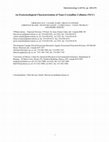
Nanotoxicology, 2010
The pulp and paper industry in Canada is developing technology for the production and use of nano... more The pulp and paper industry in Canada is developing technology for the production and use of nanocrystalline cellulose (NCC). A key component of the developmental work is an assessment of potential environmental risks. Towards this goal, NCC samples as well as carboxyl methyl cellulose (CMC), a surrogate of the parent cellulosic material, were subjected to an ecotoxicological evaluation. This involved toxicity tests with rainbow trout hepatocytes and nine aquatic species. The hepatocytes were most sensitive (EC20s between 10 and 200 mg/L) to NCC, although neither NCC nor CMC caused genotoxicity. In tests with the nine species, NCC affected (IC25) the reproduction of the fathead minnow at 0.29 g/L, but no other effects on endpoints such as survival and growth occurred in the other species at concentrations below 1 g/L, which was comparable to CMC. Based on this ecotoxicological characterization, NCC was found to have low toxicity potential and environmental risk.
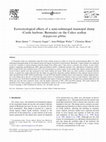
Marine Pollution Bulletin, 2005
A biomarker study was undertaken using the Calico scallop Argopecten gibbus to assess the ecotoxi... more A biomarker study was undertaken using the Calico scallop Argopecten gibbus to assess the ecotoxicological effects of a semisubmerged municipal dump on the adjacent patch reef lagoon ecosystem (Castle harbour, Bermuda). Caged scallops were deployed in situ for 2 months at various distances from the dump (50 m, 900 m and 2.7 km) and at a reference site (14 km). A suite of biomarkers comprising metallothionein (MT), lipid peroxidation (LPO), vitellin-like proteins (Vn), glutathione S-transferase (GST), DNA strand breaks and condition factor (CF) were investigated in various tissues of the scallop (gill, digestive gland and gonad). Levels of heavy metals were also measured in the whole scallop soft tissue. While there was some variation in response between tissues, in general the results indicated that the dump was negatively impacting scallops deployed in the adjacent marine environment: elevated levels of MT, DNA strand breaks, Vn and GST and reduced condition factor were found for scallops deployed nearest to the dump and at the site 1.5 km from this point source of contamination (Tuckers town) in Castle harbour, with respect to the reference site, North Rock (although this exhibited some degree of metal contamination). The gills from scallops deployed at the dump site were the most responsive tissue, with the highest expression of MT, LPO and DNA damage. This study indicates the potential of the Calico scallop as a convenient bioindicator species in the marine tropical benthos. Crown

Marine Environmental Research, 2002
Vitellins (Vn) are the major egg yolk proteins that constitute an important energy reserve for mo... more Vitellins (Vn) are the major egg yolk proteins that constitute an important energy reserve for mollusc embryos. The purpose of the present study was to examine whether the relative levels of sugars, lipids, phosphates, and labile IIb metals and calcium normally associated with Vn would differ in clam populations living at contaminated sites. Softshell clams (Mya arenaria) were collected at three sites in the area of the Saguenay Fjord: a marina, a municipal sewer outfall zone, and a reference site. The condition factor (weight:length ratio), metallothionein-like proteins, cytochrome P450 1A1 activity and DNA damage were all determined in the clam's digestive gland. Levels of total sugars, lipids, alkali-labile phosphates, proteins, and labile zinc and calcium were determined in female gonad homogenates and in purified Vn. The results show that clam gonads at the contaminated site by a marina displayed a lower index of gonad activity than the reference site. In addition, the condition factor was significantly lower at the marina site as compared to the reference site, with a concomitant increase in DNA damage and metallothionein (MT) induction. In fact, the condition factor was significantly correlated with DNA damage (R = -0.413, P = 0.045) and MT levels (R = -0.622, P = 0.03). Homogenates of female gonads were found to contain higher levels of labile IIb metals and calcium, with lower lipid content at the marina site compared to the reference site, and much higher levels of alkali-labile phosphates (ALP) and calcium at the municipal outfall site. Vn from the marina site were significantly higher in labile IIb metals but lipid content appeared to be somewhat lower than at the reference site. Vn from the municipal site were found to be highly phosphorylated, with higher levels of lipids and calcium. These results suggest that the chemical composition of the gonads and Vn are altered in contaminated sites.
Hydrobiologia, 1989
Three Quebec-based ecotoxicological laboratories participated in an intercalibration exercise to ... more Three Quebec-based ecotoxicological laboratories participated in an intercalibration exercise to assess the performance of a recently-published cost-efficient algal microplate toxicity assay. Three test series were carried out with six operators (2 from each laboratory) and two reference toxicants (Cd2+ as CdCl2 and phenol). Variables included algal cultivation technique (series 1), presence or absence of Na2EDTA in the growth medium (series
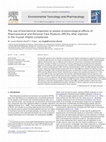
Environmental Toxicology and Pharmacology, 2009
A biomarker approach was undertaken using the mussel Elliptio complanata to assess the ecotoxicol... more A biomarker approach was undertaken using the mussel Elliptio complanata to assess the ecotoxicological effects after injection of a range concentration (0-10 mM) of three different PPCPs: carbamazepine, caffeine, methotrexate; and an effluent extract (C8) from St. Lawrence wastewaters treatment plant (Montreal, Canada). A battery of biomarkers, involving oxidative stress and genotoxicity responses: glutation-S-transferase (GST), ethoxyresorufin O-deethylase (EROD), dibenzylflourescein dealkylase (DBF), xanthine oxidoreductase (XOR) activities, lipid peroxidation (LPO) and DNA damage were determined in gonad and digestive gland tissues after 48 h of injection. Results showed an induction of the oxidative metabolism with increasing pharmaceutical concentration in those mussels injected with the PPCPs and the effluent extract. Phase I detoxification enzymes were significantly induced (p < 0.05), concretely DBF activity was significantly induced after caffeine, carbamazipine and C8 injection; and EROD activity after C8 and methotrexate injection. Oxidative stress induction only lead to lipid peroxidation (p < 0.05) in organisms injected with carbamazepine and caffeine and DNA damage in organisms injected with methotrexate (p < 0.05). EROD and DBF enzymatic activities have been found to be suitable biomarkers to determine bioavailability of pharmaceuticals. LPO and DNA damage to determine possible associated adverse effects. Nevertheless, their validation in realistic exposure scenarios and under exposure conditions should be performed in future research.
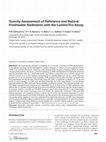
Environmental Toxicology, 2006
We examined the possibility of adapting the LuminoTox, a recently-commercialized bioanalytical te... more We examined the possibility of adapting the LuminoTox, a recently-commercialized bioanalytical testing procedure initially developed for aqueous samples, to assess the toxic potential of sediments. This portable fluorescent biosensor uses photosynthetic enzyme complexes (PECs) to rapidly measure photosynthetic efficiency. LuminoTox testing of 14 CRM (Certified Reference Material) sediments was first undertaken with (1) a ''solid phase assay'' (Lum-SPA) in which PECs are in intimate contact with sediment slurries for a 15 min exposure period and (2) an elutriate assay (Lum-ELU) in which PECs are exposed for 15 min to sediment water elutriates. CRM sediment toxicity data were then compared with those generated with the Microtox Solid Phase Assay (Mic-SPA). A significant correlation (P < 0.05) was shown to exist between Lum-SPA and Mic-SPA, indicating that both tests display a similar toxicity response pattern for CRM sediments having differing contaminant profiles. The sediment elutriate Lum-ELU assay displayed toxicity responses (i.e. measurable IC 20 s) for eight of the 14 CRM sediments, suggesting that it is capable of determining the presence of sediment contaminants that are readily soluble in an aqueous elutriate. Lum-SPA and Mic-SPA bioassays were further conducted on 12 natural freshwater sediments and their toxicity responses were more weakly, yet significantly, correlated. Finally, Lum-SPA testing undertaken with increasing mixtures of kaolin clay confirmed that its toxicity responses, in a manner similar to those reported for the Mic-SPA assay, are also subject to the influence of grain size. While further studies will be required to more fully understand the relationship between Lum-SPA assay responses and the physicochemical makeup of sediments (e.g., grain size, combined presence of natural and anthropogenic contaminants), these preliminary results suggest that LuminoTox testing could be a useful screen to assess the toxic potential of solid media.
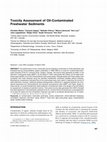
Environmental Toxicology, 2004
The performance of four microscale toxicity bioassays conducted on whole sediments was evaluated ... more The performance of four microscale toxicity bioassays conducted on whole sediments was evaluated during a bioremediation project undertaken in 1999 -2000 on a crude oil-contaminated freshwater shoreline of the St. Lawrence River, Quebec, Canada. The toxicity tests assessed included: (1) the Microtoxா solid-phase assay (MSPT), (2) the Biotox™ Flash solid-phase test (Flash), (3) the algal solidphase assay (ASPA), and 4) the Ostracodtoxkit solid-phase assay. Data generated with these assays were compared with those obtained using the standard endobenthic amphipod (Hyalella azteca) bioassay. Bioanalytical comparisons indicated that all five solid-phase tests were useful in detecting the toxicity of oiled sediments; however, statistical analyses distinguished a difference in response between the invertebrate (amphipod and Ostracodtoxkit) and bacterial luminescence tests (MSPT and Flash). Based on these results, it is recommended that careful selection of biotests be made in the design of the test battery for assessment of residual oil sediment toxicity. Time-series toxicity data generated with ASPA indicated that oiled sediments in the freshwater wetlands of the St. Lawrence River remained toxic to phytoplankton for at least 65 weeks and that remediation treatment was able to accelerate detoxification by 16 weeks.

Environmental Toxicology, 2002
A spatial and temporal survey of six sites in the Saguenay Fjord and of one adjacent site in the ... more A spatial and temporal survey of six sites in the Saguenay Fjord and of one adjacent site in the St. Lawrence River estuary (Quebec, Canada) was undertaken to study the possible effects of anthropogenic contaminant input on soft-shell clam (Mya arenaria) populations. Bivalve sampling sites were selected because they reflected a range of areas representative of either no known (or apparent) pollution sources or of areas potentially influenced by different gradients and types of contamination sources. The most upstream site selected in the Saguenay Fjord, nearest to a highly populated and industrialized sector, and the most downstream site, near its mouth with the St. Lawrence River estuary, spanned a distance of some 70 km and encompassed the entire intertidal area suitable for Mya arenaria habitat. To measure effects in collected animals, we used a comprehensive battery of biomarkers composed of metallothionein-like proteins (MT), 7-ethoxyresorufin O-deethylase activity (EROD), DNA damage (DD), lipid peroxidation (LPO), vitellinlike proteins (Vn), phagocytosis (PHAG), nonspecific esterase (NspE) activity, and condition factor (weight-to-length ratio of clams). Vn, PHAG, DD, and NspE biomarkers were assayed in hemolymph (or hemocytes), whereas others (MT, EROD, LPO) were determined in the digestive gland. Whole-tissue metal content was also quantified in clams collected in the spatial survey. The spatial survey conducted in June 1997 showed significant effects at all sites, and principal component analysis indicated in addition that the more important responses were linked to the MT, LPO, and NspE biomarkers. Clams collected from sites closest to the upstream reaches of the fjord generally displayed higher levels of tissue metals (cadmium, manganese), as well as greater responses of NspE activity, MT, LPO, and PHAG. Animals collected from sites influenced by municipal wastewaters had higher levels of Vn, suggesting the presence of environmental estrogens. The results of the temporal survey (six monthly samplings of clams at three sites from May through October, 1997) showed that the bivalve reproductive cycle (vitellogenesis and spawning) can modulate the expression of several biomarkers. Vn levels, for example, were positively correlated with DD and EROD and negatively correlated with MT, suggesting that reproduction can influence the susceptibility of clams to some contaminants. Discrimination analysis over the 6 months of sampling revealed that the mean value of the discriminant function changed significantly over time, suggesting important changes in the relative contribution of each biomarker. In short, this study has provided evidence that clam populations in the Saguenay Fjord are impacted by multiple sources of contamination whose effects can be modulated by reproduction.

Environmental Toxicology, 2002
The toxicological effects of a primary-treated municipal effluent plume were investigated in two ... more The toxicological effects of a primary-treated municipal effluent plume were investigated in two species of freshwater mussels, Elliptio complanata and Dreissena polymorpha, exposed for 62 days at sites upstream and downstream of an effluent outfall in the St. Lawrence River (Quebec, Canada). Levels of metallothioneins (MT), cytochrome P4501A1 activity, DNA damage, total lipids, relative levels of vitellins, and phagocytic activity (in E. complanata hemocytes) were determined after the exposure period. A parallel analysis measured heavy metals and coprostanol in mussel tissues. The results show that significant levels of coprostanol and some metals (specifically, Cu, Hg, Sb, Se, and Zn) had accumulated in mussels caged 5 km downstream of the effluent plume. Mixed-function oxidase activity, MT in gills, total lipids, DNA damage (in D. polymorpha only), and total hemolymph bacteria (in E. complanata only) had increased in these mussels, while levels of total cadmium (Cd), MT in digestive glands or whole soft tissues, phagocytic activity, and DNA damage in the digestive gland (in E. complanata only) were diminished. The exposure of mussels to surface waters contaminated by a municipal effluent led to many stress responses, depending on both the tissues and the species being examined.
Environmental Toxicology, 2000
ABSTRACT

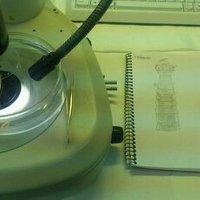
Uploads
Papers by Christian Blaise